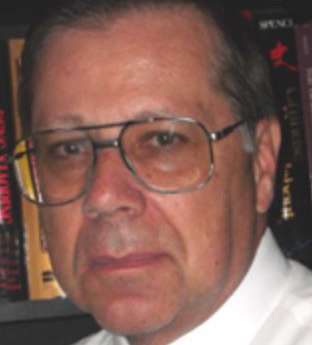
By JOHN RICHARD SCHROCK
China has now surpassed the United States in the number of most-cited papers according to an annual study of the most cited science research papers by Japan’s National Institute of Science and Technology Policy. This is the fourteenth major report in the last year documenting the decline of U.S. science research papers, STEM doctorates, international patents, and other indicators of former American science supremacy. And now we have lost first place in highly-cited research.
Many of these reports express concern over the low performance of U.S. K–12 students in math and science and their low numbers entering university to pursue STEM majors. They stress the need to increase the inflow of foreign students to ensure future U.S. advances in science research. Without foreign students, many U.S. universities would have to close their physics, engineering, chemistry and other graduate departments. But none have addressed our K–12 pipeline. In Singapore, China and some other countries, half of their university students pursue STEM majors. But less than 18 percent of U.S. college students pursue STEM majors as undergraduates. If the U.S. is to have a future in science, our K–12 educational systems governed by 47 state boards of education and four state education czars must dramatically increase the quantity and quality of science education in our public school curriculum.
1. Kansas is one of only eleven states to require secondary science teachers to specialize in biology, chemistry, physics or earth sciences. The other 39 states certify or license weakly-trained one-size-fits-all science teachers barely qualified to teach middle school science. These states and D.C. must switch to this in-depth education in each science discipline, immediately.
2. Training of these teachers must include at least 50 credit hours of genuine on-site science courses for biology teachers and 40 for chemistry, physics or earth science teachers. Our disastrous experiences with distance learning during the pandemic provided clear evidence that only face-to-face coursework with genuine hands-on reality-based labwork and fieldwork is acceptable for teachers and students.
3. Mathematics underlies science understanding, including students not pursuing a science career. Algebra should begin to be taught in fourth grade, as it is in Asia. Math-heavy sciences such as physics can then be taught at the beginning of high school rather than wait until the end.
4. A detailed high school human anatomy and physiology course with full hands-on labs is essential for every student to understand their owner’s manual. This high school requirement in Germany has resulted in citizens who can self-refer themselves to a specialist and reduces per capita healthcare costs to less than half those costs in the U.S. Americans pay a heavy stupidity-tax.
5. A minimum of 20 percent of the school day in middle and high school should be spent in science classes. This recommendation by the late John Moore of UC-Riverside has long been ignored.
6. Elementary teachers must be trained in universities with a minimum of 24 credit hours of science that includes basic college introductory biology, chemistry, physics and earth science courses with labs, and also courses with hands-on science activities for elementary students. Surveys have shown that many scientists developed their interest in science when of elementary school age. Currently China’s high school graduates learn more science than today’s college-graduated U.S. elementary science teachers.
7. Standardized state testing in science must end. Students are not standardized assembly-line products; they enter school different and should leave school different. Professional teachers design and administer their own evaluations based on their unique student populations.
8. Until a higher level of teacher training is achieved, a distinction must be made between fully-qualified and undertrained teachers, with a pay difference that promotes moving to higher competency.
There was a time in the 1800s when a grade school education was enough. In the early 1900s a high school education became “needed.” Life improves due to science and technology and the future will require citizens who understand even more science. India’s Nehru said “the future belongs to countries who make friends with science.” Without immediate and major changes in U.S. science education, this future is not ours.
. . .
John Richard Schrock has trained biology teachers for more than 30 years in Kansas. He also has lectured at 27 universities during 20 trips to China. He holds the distinction of “Faculty Emeritus” at Emporia State University.





